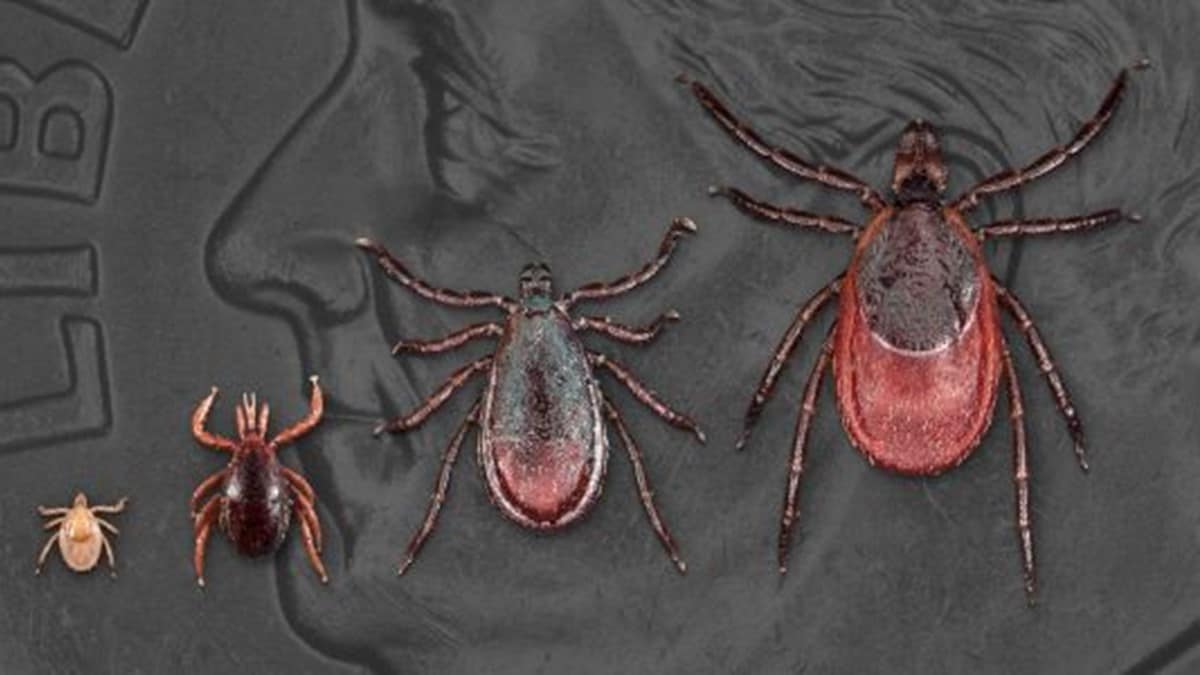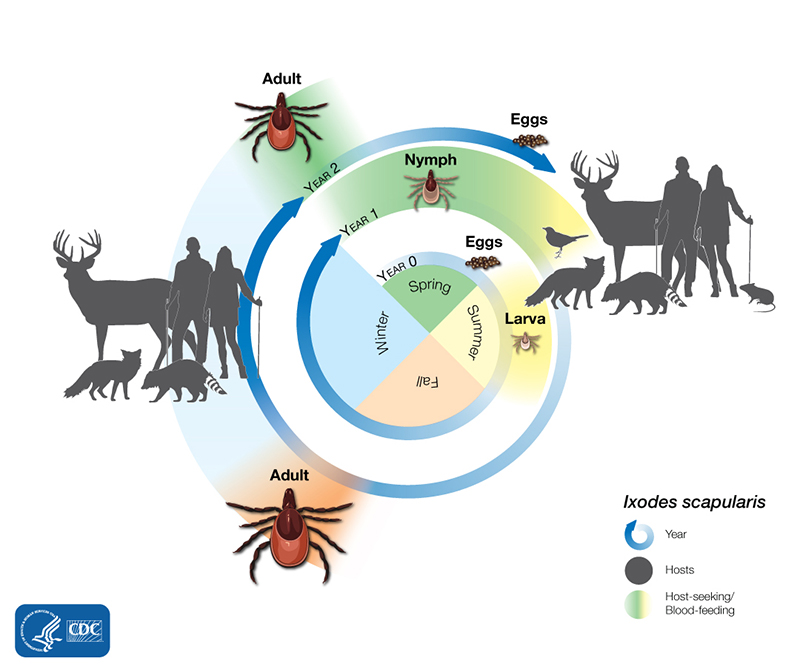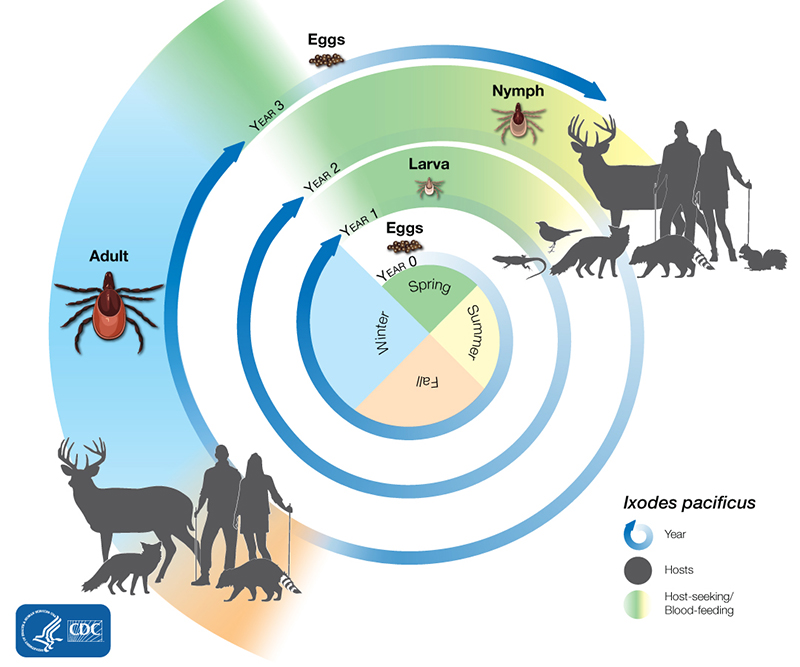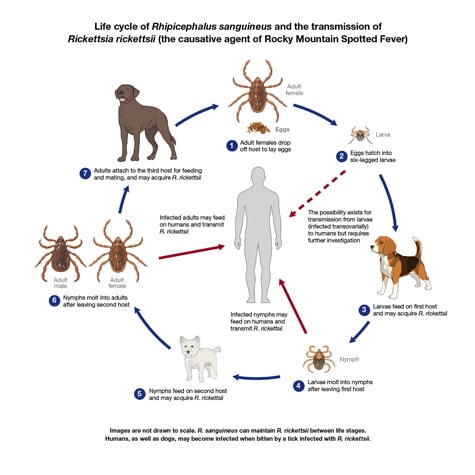Key points
- Most ticks go through four life stages: egg, six-legged larva, eight-legged nymph, and adult. After hatching from the eggs, ticks must eat blood at every stage to survive.
- Ticks usually acquire pathogens early in their life (larval or nymphal stages) when they feed on animals. They transmit those pathogens to other animals or to people later in their life (nymphal or adult stages).

Hosts
Ticks can feed on mammals, birds, reptiles, and amphibians. Most ticks prefer to have a different host animal at each stage of their life. Ticks that require this many hosts can take up to 3 years to complete their full life cycle, and most will die because they don’t find a host for their next feeding. Some tick species, like the brown dog tick, prefer to feed on the same host during all life stages.
Keep reading
Lifecycles
Ixodes scapularis
The lifecycle of Ixodes scapularis ticks generally lasts two years. During this time, they go through four life stages: egg, larva, nymph, and adult. After the eggs hatch, the ticks must have a blood meal at every stage to survive. Blacklegged ticks can feed from mammals, birds, reptiles, and amphibians. The ticks need a new host at each stage of their life.

Ixodes pacificus
The lifecycle of Ixodes pacificus ticks generally lasts three years. During this time, they go through four life stages: egg, larva, nymph, and adult. After the eggs hatch, the ticks must have a blood meal at every stage to survive. Blacklegged ticks can feed from mammals, birds, reptiles, and amphibians. The ticks need a new host at each stage of their life.

Rhipicephalus sanguineus
Rhipicephalus sanguineus, brown dog ticks, spread the bacteria that causes Rocky Mountain spotted fever in some parts of the southwestern United States and Mexico.

